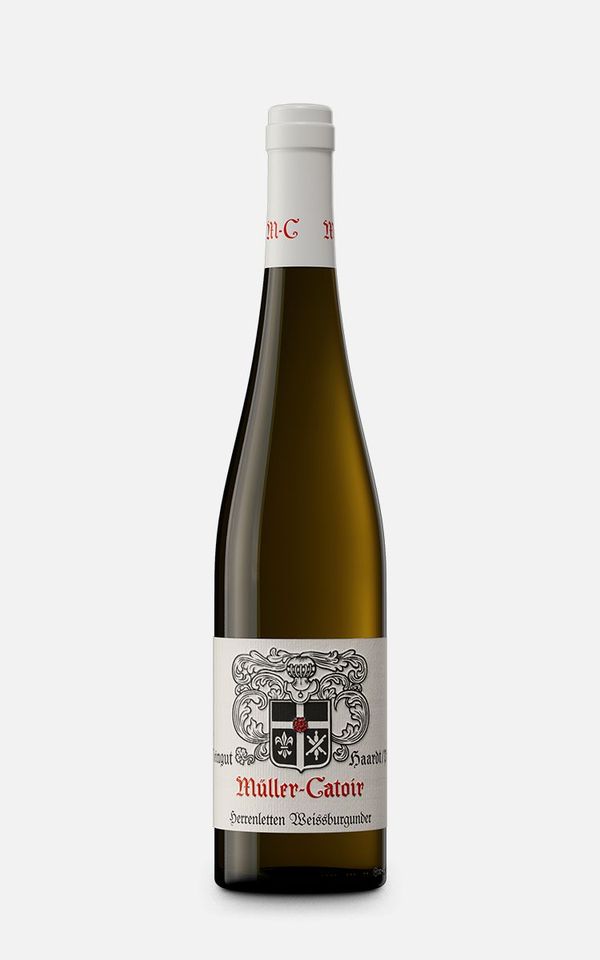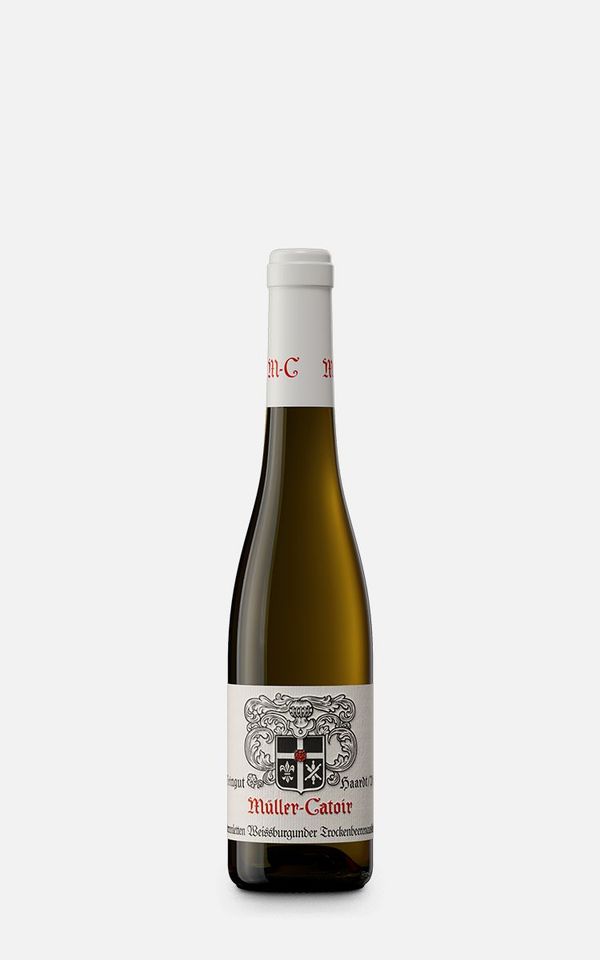The soil
Letten
Light beige to white-gray hard, holey reef limestone and olive-gray soft clay marl characterize the subsoil and soil of the vineyard. Massive reef limestone rocks are embedded in the soft clay marlstone deposited in layers. The dense reef limestone, which looks like marble or agate, consists of 95 percent pure calcite. In contrast to shell limestone, clay particles and iron compounds are only present in trace amounts. Formed by the activity of green algae and microorganisms, fossilized bundles of algae and finely laminated, cauliflower-like layers of limestone form rocks. With its fossil content and high purity, reef limestone is a rare carbonate sedimentary rock.
The silty clay marl stone consists of extremely fine-grained clay and calcite particles. Clay clearly predominates at 60 to 80 percent. Clay-rich marl was previously called Latvian, from which the location name is derived. In contrast to shell limestone, clay marl is a brackish water sediment.
The silty clay marl stone consists of extremely fine-grained clay and calcite particles. Clay clearly predominates at 60 to 80 percent. Clay-rich marl was previously called Latvian, from which the location name is derived. In contrast to shell limestone, clay marl is a brackish water sediment.
- Data and facts
- Emergence: The geologically “young” reef limestone and “young” clay marl were formed 23 to 20 million years ago in the Tertiary period. The climate was warm and humid, the temperature a few degrees higher than today. Neustadt was already roughly where it is today. The sea slowly withdrew from the entire Rhine valley. Brackish water conditions prevailed in the lagoon-like coastal area of Neustadt. Sea level fluctuations and seasonal freshwater supply to the Speyerbach caused the salinity to constantly fluctuate between fresh and brackish water. Large amounts of lime were precipitated from the lime-supersaturated warm brackish water when cold fresh water was added. Lime mixed with the clay load of the Speyerbach to form the muddy seabed. Reef bodies formed on the shallow mud areas through the activity of microorganisms and thread-like green algae. Microorganisms formed finely laminated limestone layers (stromatolites) reminiscent of agates. Lime precipitated from the lagoon water coated and fossilized the tufts of green algae. Algae and microorganisms settled again on the newly formed limestone surface. The interplay of lime precipitation and new life caused the cavernous reef bodies populated by mudflat snails to grow higher.
- Era: Tertiary
- Age of origin: 23-20 million years before today at the beginning of the Miocene period
- Composition: The dense soil rich in clay and limestone is the result of reef limestone and clay marl weathering. In the reef area, the vineyard is littered with fist-sized limestones. Stone content increases with depth. Locally, reef limestone limits deep growth. Determined by swelling clay minerals, the relatively heavy soil stores large amounts of water. During longer dry periods, the soil structure shrinks and forms centimeter-wide dry cracks. Humus trickles
through the cracks into deeper soil layers (self-mulching). The nutrient-rich soil is determined by clay minerals and the solution weathering of the reef limestone. Clay minerals swell and release the elements aluminum, silicon, potassium and calcium. In addition, a lot of calcium from reef limestone weathering circulates in the soil. The literature describes boron and manganese as trace elements in freshwater reef limestone. Ice Age floor tiling determines the transition from Herzog to Herrenletten. In a transition area, Haardt sandstone weathering soil mixes with reef limestone-clay marl weathering soil. - Vineyards: Herrenletten


